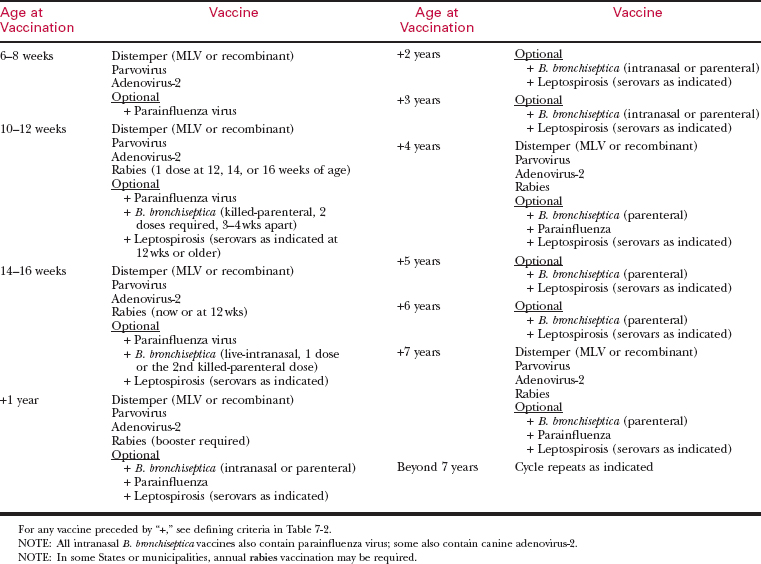Chapter 7 Vaccination Guidelines for the Dog and Cat
Proposed changes in vaccination protocols for companion animals, the safety of licensed vaccines, and advances in vaccine technology are among the most important issues practicing veterinarians face as we enter the 21st Century. While many would argue that these are already issues, the future promises to be especially challenging as the vaccines we use and the protocols we recommend undergo unprecedented change.
HISTORICAL BACKGROUND
Prior to 1998, vaccination recommendations were limited to the Compendium of Animal Rabies Prevention and Control, published annually by the National Association of State Public Health Veterinarians (at www.nasphv.org). In 1998, the American Association of Feline Practitioners (AAFP) published the first report of an Advisory Panel on Feline Vaccines recommending that adult cats be vaccinated every 3 years, rather than annually, against feline parvovirus (panleukopenia). Reaction to this report was profound. Veterinarians throughout North America voiced concerns that anything other than annual vaccination of adult cats against panleukopenia was inappropriate, irrational, and quite possibly detrimental to the health of the cat population. In December of 2000, the same Advisory Panel published a second iteration of the Guidelines for Feline Vaccination. In that report, the Panel expanded the “every 3 year” booster recommendation to include feline herpesvirus-1, feline calicivirus, and panleukopenia.
FUTURE VACCINATION ISSUES
The introduction of so many vaccines in the past 10 years, and the promise of more to come, justify the need for the veterinary profession to critically address which vaccines are administered to which patients and at which stage of life.
THE VACCINE GUIDELINES
Current editions of both the Canine and Feline Vaccination Guidelines and updates on new vaccines can be reviewed at www.dvmvac.com.
ANNUALIZED VACCINATION PROTOCOLS
Tables 7-1 through 7-12 show annualized vaccination protocols for dogs and cats at moderate risk (applies to most), high risk, and low risk of exposure to infectious agents, while also taking into consideration the recommendations set forth in the Canine and Feline Vaccination Guidelines.
Stay updated, free articles. Join our Telegram channel

Full access? Get Clinical Tree



